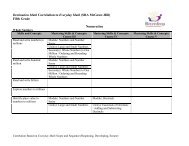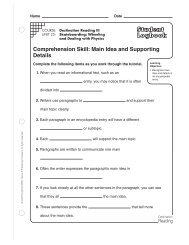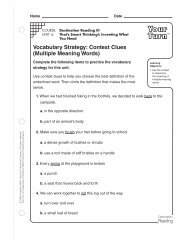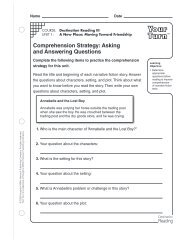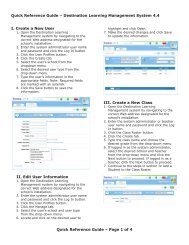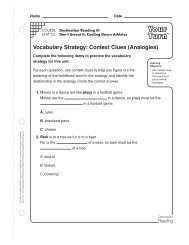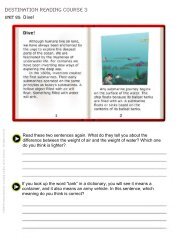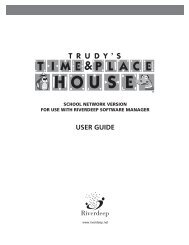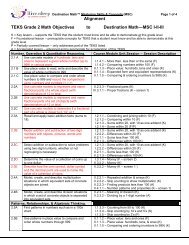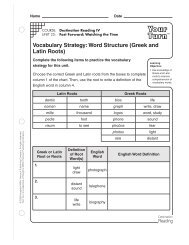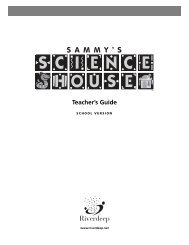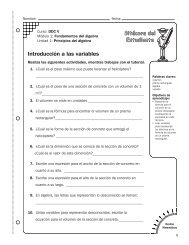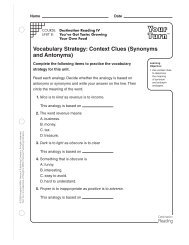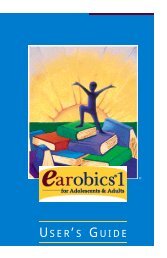Course III Teachers Guide.pdf - Houghton Mifflin Harcourt
Course III Teachers Guide.pdf - Houghton Mifflin Harcourt
Course III Teachers Guide.pdf - Houghton Mifflin Harcourt
You also want an ePaper? Increase the reach of your titles
YUMPU automatically turns print PDFs into web optimized ePapers that Google loves.
DESTINATION READINGETTING STARTED5Destination Reading and Reading Fluency InstructionReading fluency consists of three elements: accuracy in decoding words, automaticity in word recognition, and effectiveprosody, or use of expression while reading. Research has shown that lack of fluency reliably predicts problems inreading comprehension. Further, a strong correlation exists between oral reading fluency and reading comprehension.According to the National Reading Panel (2000), "practice is generally believed to improve fluency... and guidedrepeated oral reading has a significant and positive impact on word recognition, reading fluency, and comprehension forstudents of all ages." Such practice can be implemented using Destination Reading.Both printouts of reading passages in Destination Reading and the courseware can be used to support a wide variety ofinstructional methods for reading fluency. (Note: Copies of any reading passage in the <strong>Course</strong>ware can be printed bygoing to the Teacher Tutorials on the home page of the RLMS, and clicking the Resources tab). A few examples oftechniques for instruction are identified below.• Timed Repeated ReadingsThe wide range of readability levels in the program allow for students to move to increasingly more difficult passagesonce they have reached an acceptable level of fluency on a particular passage.Tip: Consult the Appendix for a listing of the Lexile levels of each of the strategic reading passages.• Repeated Readings with Recorded Models/Audio SupportAvailable for each passage, the audio feature in the <strong>Course</strong>ware provides an excellent modeling of fluent reading,which in turn provides the guided practice recommended by the National Reading Panel. By listening to a narratorread smoothly with expression at a reasonable rate, students can improve their own prosody.Tip: After students listen to a narrator read an excerpt of a passage aloud, they can practice reading the excerptaloud. Depending on students' level of fluency, some may be able to read aloud along with the narrator.• Readings with Phrase BoundariesThe high-interest passages can be used to provide students with a visualmodel of how to read in phrases instead of word by word. After printing areading passage, mark the phrase boundaries. See the example in the boxat the right.You humans / think you're thegreatest. // Well, / you're no match /for me! // I'm a gecko, / and thereare a lot of things / that make mespecial. //(from Destination Reading <strong>Course</strong> <strong>III</strong>,Unit 10: "Walking on the Ceiling")



